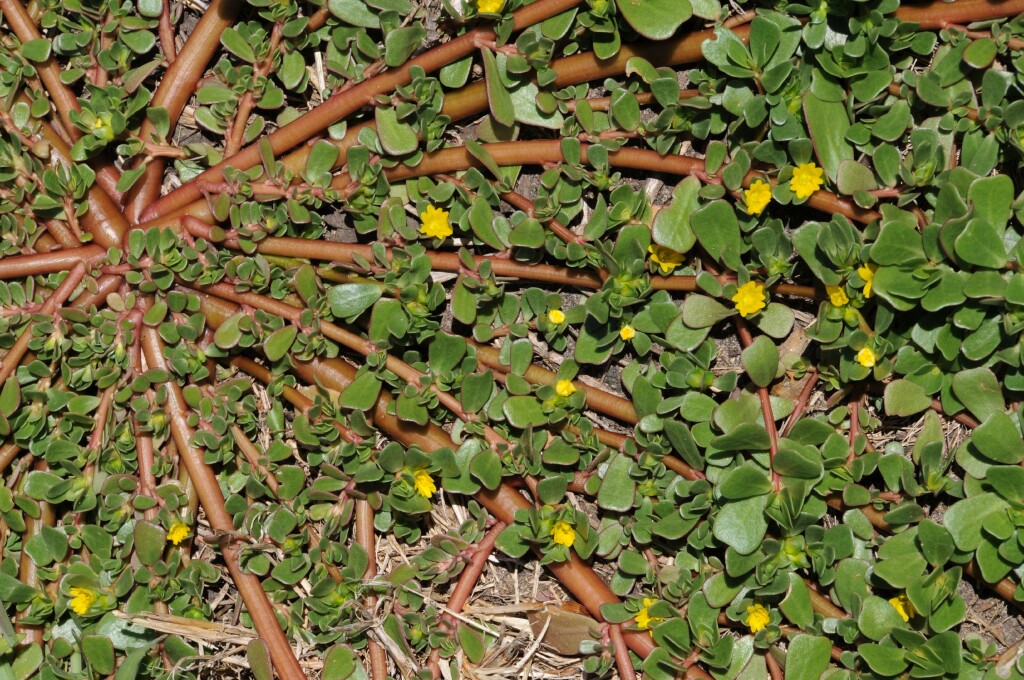Portulaca oleracea
L. PigweedProstrate, often reddish annual with stems to c. 20 cm long. Leaves obovate to cuneate, 5–30 mm long, 5–15 mm wide; axillary hairs c. 1 mm long. Flowers in condensed, head-like cymes of 2–several, opening briefly, or some apparently not opening; sepals ovate, 3–6 mm long, acute, keeled, fleshy, the outer largely enveloping the inner; petals yellow or greenish, obovate, 3–7 mm long; stamens 8–15; stigmatic arms 3–6. Capsule obtusely 2- or 4-angled; seeds c. 1 mm diam., blackish, dorsally tuberculate in rows. Flowers Dec.–Mar.
MuM, Wim, VVP, VRiv, MSB, RobP, MuF, GipP, OtP, WaP, Gold, CVU, DunT, NIS, EGL, EGU, HSF, HNF, Strz, VAlp. All States. Almost cosmopolitan. A common summer and early autumn weed of open situations in gardens, paddocks, vacant land etc., but seldom collected and undoubtedly more widespread than records indicate. Doubtfully native anywhere in Victoria, but apparently native in central and northern Australia.
As currently accepted, a variable species, possibly containing several native and exotic components which may be worthy of formal recognition.
Portulaca grandiflora Hook., is a tender, summer-flowering annual with terete leaves c. 1–2 cm long, and yellow, reddish or purplish flowers to c. 3 cm diam. It is commonly grown as a garden subject and may self-seed from year to year, but is not known to have become naturalised anywhere in Victoria.
Walsh, N.G. (1996). Portulacaceae. In: Walsh, N.G.; Entwisle, T.J., Flora of Victoria Vol. 3, Dicotyledons Winteraceae to Myrtaceae, pp. 215–224. Inkata Press, Melbourne.
 Spinning
Spinning



